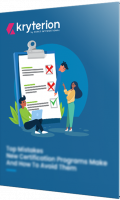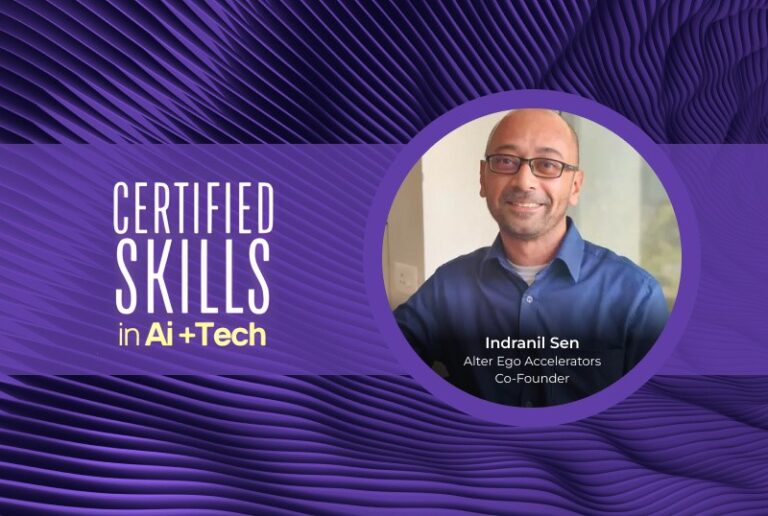In the latest episode of Kryterion’s Certified Skills in Tech + AI podcast, we spoke with Indranil Sen, co-founder of Alter Ego Accelerators. Indranil Sen is a trailblazing advocate for reshaping workplace culture with a strong emphasis on employee-centricity. His strategic philosophy revolves around the equation EX equals CX, underscoring the intrinsic connection between Employee Experience (EX) and Customer Experience (CX).
With a wealth of corporate experience garnered from renowned organizations like American Express and IBM, Indranil places employees at the forefront, considering their satisfaction as the catalyst for customer loyalty.
Listen to the full podcast here:
When you think of the rise of AI and its impact on productivity and companies, how do you see AI affecting work productivity and the whole experience of transforming a company to introduce AI, given that many people are hesitant because they feel their primary skills are being automated?
I think AI, which has grown significantly over the last few years, has picked up a lot of steam and pace across the globe. It cuts across technology platforms and domains. In the HR space, where my expertise lies, human resources have embraced AI in various forms. When I work with small and medium organizations, I see many of them highly committed to adopting technology solutions for their business needs. They have enhanced their expectations and are looking for technology solutions that automate their processes and provide intuitive insights in the form of analytics.
Large corporations are adopting technology platforms with AI capabilities, which apply data sets through the necessary logic and algorithms to aid decision-making. Most of our clients are inquisitive about AI’s capabilities but are sometimes skeptical due to limited awareness and high investments. We engage with them to showcase simulations, prove AI’s capabilities, and encourage adoption. We present case studies of similar deployments in the same industry, helping them achieve desired outcomes using AI. The key is gathering requirements accurately and integrating AI to achieve those outcomes by building the best-fit logic and algorithms. If not done correctly, it can be detrimental to the results.
In short, the acceptance and demand for AI in HR have increased significantly. While AI has not yet mastered the complex algorithms of people analytics and behavioral trends, domains like recruitment, talent acquisition, and learning and development have started embracing AI and delivering desirable outcomes.
What do you think about AI and training? People need to be retrained for the AI space. Where do you begin, considering executives have different skill sets and backgrounds? How do companies decide where to invest their time and energy when AI is changing so fast?
Training and development have seen AI pick up steam and mature over the last few years. Traditional interventions, such as classroom training based on generic behavioral interventions, have evolved into individualized offerings. AI helps learning and development teams profile individuals based on their competencies and skills. When AI is integrated with performance management, it gives learning consultants and trainers better insights into the opportunity areas for introducing learning interventions.
Learning teams can now decipher what kind of interventions work best for an individual. There is no one-size-fits-all solution. Learning consultants can now customize tailor-made interventions for individuals, which could include learning on the go, flexible timelines, and measurable outcomes. For instance, if I understand a learning intervention through gamification, AI helps convert the training program into a gamification model. If I understand better through visuals or case studies, AI pulls out relevant case studies for my learning needs.
AI integrates behavioral patterns and performance data to help learning consultants determine the best learning programs and delivery methods for individuals, resulting in desired outcomes. While there’s a long way to go in interpreting human psyche and behavior, we’ve made significant progress. The current L&D interventions involve a lot of customization and individualization to deliver desired outcomes.
Where do companies invest their time and energy when AI is changing so fast? WATCH Kryterion’s Chief Operations Officer, Rob Armstrong, discuss 7 Insights on Empowering the Workforce in the AI Era.
Do you see any easy wins when it comes to AI? What should companies start implementing right now as low-hanging fruit?
In my experience, AI has been most quickly and efficiently embraced by the recruitment, hiring, or talent acquisition space over the last three to five years. This is primarily due to the voluminous nature of their work. When there is a hiring requirement, numerous resumes and applications reach recruiters. Historically, these had to be sifted through by individuals, which is time-consuming and tedious. Many HRMS technology platforms have deployed ATS (Applicant Tracking Systems) codified with algorithms and logic to help identify the right skill set and competencies, matching them against job descriptions using keywords and desired behaviors.
This has helped talent acquisition teams globally reduce the time spent sifting through resumes and identifying the best-fit candidates. Additionally, some recruitment organizations have adopted robotic interviews. The initial screening, which used to be done by individuals, is now handled by pre-fed questions and answers, front-ended by a chatbot or robotic interview process. This process provides greater insights into body language, proficiency levels, and confidence levels, helping organizations quickly and efficiently select the right candidates without too much manual intervention.
Recruitment and talent acquisition are one area where AI has gained a strong foothold globally.
Don’t you think that’s a little scary for a lot of candidates out there? There’s probably a lot of intimidation with all of this.
Absolutely. I’ve been researching this because it’s my area of expertise. The risk I see is that if users are not trained efficiently, there is an opportunity for biases to creep in. These biases will never be healthy or desirable for an organization. It’s happening right now. Attrition levels across industries in India, for instance, are glaringly high. HR teams need to ask themselves why there is so much attrition, angst, and anxiety among employees if AI is deployed effectively.
There is a risk for the masses and baby boomers who were used to face-to-face interviews, which have now converted into remote interviews. Seeing a robot or chatbot on the other side can be overwhelming. Overcoming biases while feeding the logic and algorithms into the technology platform is an intricate process requiring many test runs, simulations, and hand-holding. Without proper training, the hiring process will not be as efficient as it could be through AI.
AI has perfected the art of the algorithm with many data sets, but the human component of interaction and team camaraderie still requires human experience. There’s something about human interaction that solidifies some things, and the subtleties in life are hard for AI to capture. Even if AI could scan my brain and match it with yours, something would come out and throw it off due to the complexity of the human experience.
If you had one piece of advice for all the executives out there thinking about AI, what would that message be?
I’ve seen a blend of executives: some heavily tilted towards embracing AI for everything and some very regressive and non-committed towards AI-based work. Given the stage of AI today, we need a balanced approach. AI cannot be relied upon blindly for making critical business decisions like hiring the right people or building a financial forecast. A balance needs to be maintained where AI and analytics are used, but their relevance with post-event data must be considered. Look at the level of accuracy and statistical confidence of the data sets to conclude whether AI can be trusted blindly or should be leveraged primarily for automation and workload optimization while letting the human brain handle most of the critical decision-making using statistical and analytical technology.
Kryterion’s Approach to AI-integrated Test Development and Delivery
At Kryterion, we clearly see the opportunities and disruption that AI is bringing to our industry. Our top priority is to provide clients with the best mix of security, innovation, service, and value in our tools for test development and delivery. AI is quickly becoming an integral technology in our products and direction. The path we are on with AI encompasses the immediate benefits it provides while maintaining a sharp awareness of its evolution allowing us to ensure our products continue to meet or exceed the needs of our clients.
Please contact us to set up a meeting so we can further discuss how important AI is to our future and our clients.
Want to keep up with insights on AI in the testing industry? Listen to the Kryterion podcast







